PostgreSQL IN ConditionIn this section, we are going to understand the working of PostgreSQL IN condition, which is used with WHERE clause to fetch data from a table where defined condition satisfies the IN condition. Examples of IN operator, and IN operator with a subquery. Introduction of PostgreSQL IN conditionThe PostgreSQL IN condition is used within the WHERE clause to get those data that matches any data in a list. In other words, we can say that the IN condition is used to reduce multiple OR conditions. PostgreSQL IN Condition SyntaxIn PostgreSQL, the IN condition can be used with the SELECT, INSERT, UPDATE, and DELETE commands. OR We can write the above syntax below because inside the parentheses is known as a subquery that is a statement nested inside another statement. In the above syntax, we have used the following parameters:
Note:
Examples of PostgreSQL IN ConditionLet us see different examples to understand how the PostgreSQL IN condition works: Example of PostgreSQL IN Condition: with Character valuesFor this, we are taking the employee table to get the employee information of emp_fname having John and Ava employees. We are using the IN operator with WHERE clause as we can see the following command: Output On executing the above command, we will get the following result: 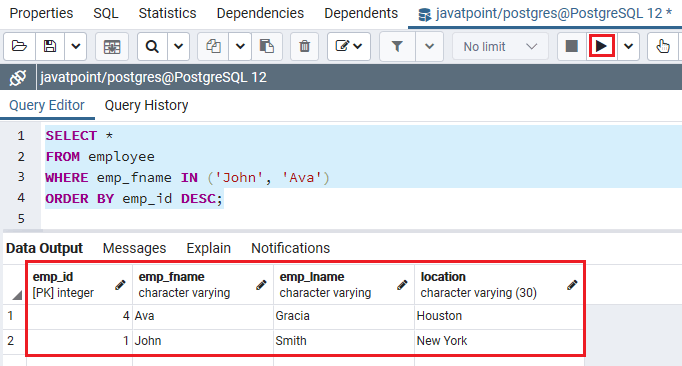
In the above example, the PostgreSQL IN condition will return all rows from the employee table where the emp_fname is 'John' and 'Ava'. In the above command, we use the (*) in the SELECT, which means that all fields from the employee table will be displayed in the output. In the below command, we are using the OR and equal (=) operators in place of the IN Operator. And the statement is equivalent to the above command: Output After successful executing of the above command, we will get the following result: 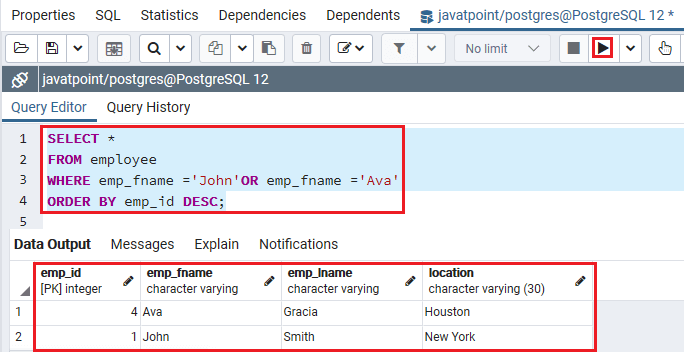
As we can see in the above images, both the outputs are providing similar results, but using the PostgreSQL IN condition makes the command more comfortable to read and more efficient as compared to OR and Equal (=) Operators. Example of PostgreSQL IN condition: with Numeric valuesTo see PostgreSQL IN operator examples, we will take the department table from the Javatpoint database. Suppose, we want to know the department information of emp_id 1,2, and 3. So, for this, we are using the IN operator in the WHERE clause as we can see the following command: Output After executing the above command, we will get the following output: 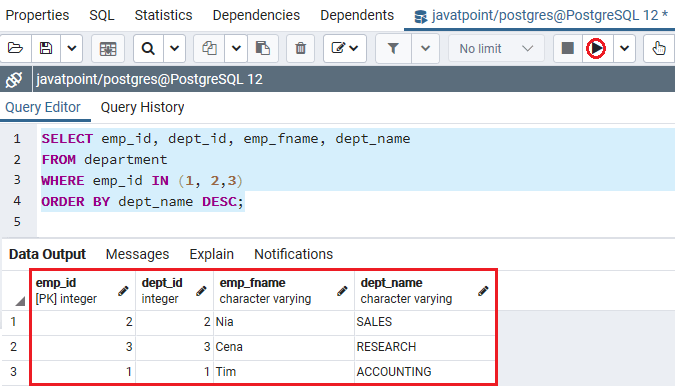
In the above command, we can also use the OR and equal (=) operators in place of the IN Operator. And the statement is equivalent to the above command: Output After implementing the above statement, we will get the following result: 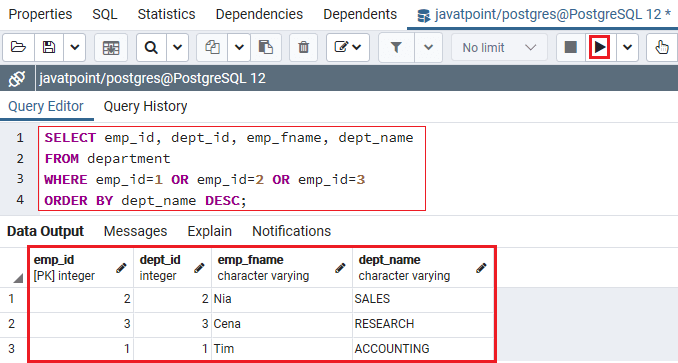
After implementing both the commands, we clearly see that the command where we use the IN operator is more readable, and short as compared to the command where we use the OR and Equal (=) Operators. In other words, we can say that PostgreSQL implements the command with the IN operator faster than using the lists of OR operators. Example of PostgreSQL IN with a subqueryIn the following command, we will use the CAST() function, which changes a value of any type into the specified datatype. In the below example, the CAST() is used to convert the Joining_date AS Date datatype returns a list of emp_id from the department table where the Joining_date is 2020-06-22: Output After executing the above command, we will get the following result: 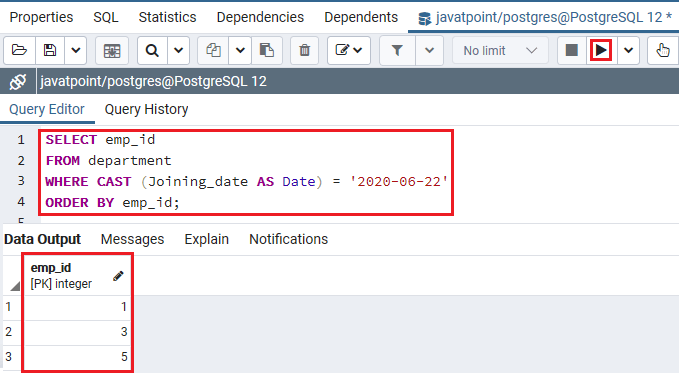
As we can in the above screenshot that the command returns a list of values, we can use it as the input of the IN Operator as shown in the following command: Output After executing the above command, we will get the following result: 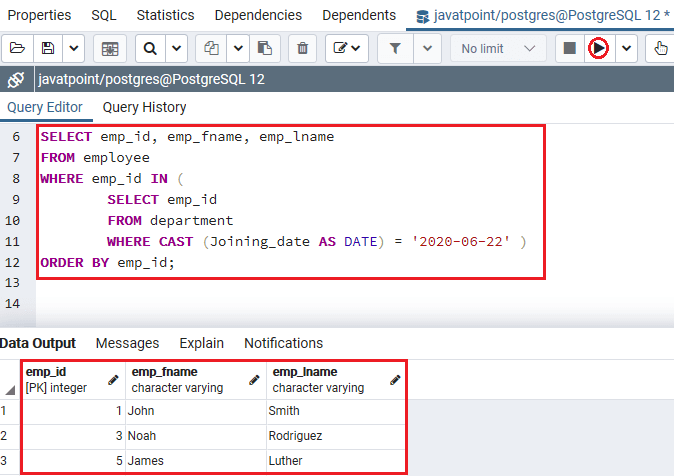
OverviewIn the PostgreSQL IN Condition section, we have learned the following topics:
Next TopicPostgreSQL NOT IN Condition
|
 For Videos Join Our Youtube Channel: Join Now
For Videos Join Our Youtube Channel: Join Now
Feedback
- Send your Feedback to [email protected]
Help Others, Please Share









